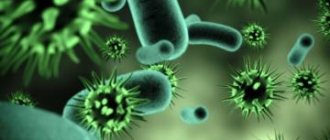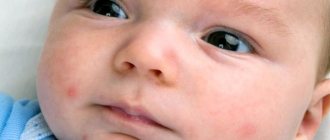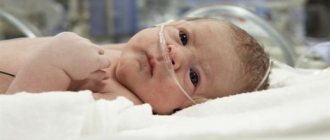How to treat rubella in children
There is no cure for rubella as such. Treatment of this disease, like many other viral diseases, is symptomatic and boils down to monitoring the course of the disease and alleviating symptoms. In some cases, complications may develop, which, in turn, will require drug treatment.
Rubella in children
Children with rubella are rarely hospitalized - only if the disease is severe and complications occur. If the child feels relatively well, then treatment can be carried out at home. The decision on hospitalization is made by the attending pediatrician.
Symptoms
At an early age, the disease with rubella goes away much faster and without any complications. In an adult, this virus can cause complications and become severe.
In children under one year old, rubella is quite rare for the reason that while in the womb, the baby acquires part of the immunity from it. After birth, the child has a certain amount of antibodies in his blood and is able to resist the disease in the early stages.
When the mother of the child gets sick during pregnancy, the baby will get rubella at birth. If rubella strikes a pregnant woman at an early stage, this can cause a number of severe complications during childbirth. The child may develop defects in some organs after birth and other negative consequences.
Symptoms in a child under 1 year of age are a dry cough and mucous discharge from the nose, inflammation of the lymph nodes in the neck and back of the head. When rubella occurs, a newborn may experience characteristic skin rashes in the form of red and brown spots in the first week. For this reason, the disease is so named, because of the main symptom.
The rash has a round and oval shape that spreads from the face to other parts of the body. The palms and soles of the feet are not affected. In infancy, the same red spots can be seen in the child’s mouth. The main symptom of this infectious disease is increased body temperature (up to 38 degrees).
Since the period of sedimentation, accumulation and development of the virus in the body does not occur immediately, but over a certain period of time, up to 3 weeks, symptoms may not appear. During the incubation process, the virus is hidden in the body. Even after the baby is born, the disease may not immediately show itself, despite the fact that the virus is already in the body.
Treatment at home
Basic recommendations from doctors when treating rubella in children:
- maintain bed rest;
- give your child a lot of sleep (ideally at least 10 hours a day);
- do not wrap the child up;
- regularly carry out wet cleaning of the premises;
- at a very high temperature (above 38-38.5 degrees), give the child antipyretics;
- in case of runny nose and congestion, bury the baby’s nose with special anti-runny nose remedies for children;
- for conjunctivitis, use eye drops;
- if necessary, give the child antihistamines;
- in some cases, the doctor may prescribe medications (Interferon, etc.).
Also, during the period of illness, the child’s diet should be changed:
- divide meals into equal time intervals - it is better to give the same small portions every 3-4 hours;
- food should be prepared in puree or liquid/semi-liquid form;
- dishes should not be hot or cold;
- exclude fried, smoked, salted foods;
- include fruit and berry purees or smoothies in your diet;
- Give the child a lot of drink - warm, but not hot compotes, teas (preferably with raspberries, rose hips, chamomile, honey, etc.), water, juices, fruit drinks, etc.
Important! During the period of illness, it is necessary to isolate the child so as not to infect others with rubella. It is especially important to stop contact with pregnant women, since this disease is very dangerous for pregnant women, namely for the fetus (“Rubella during pregnancy”).
Antibiotics for rubella
Antibacterial drugs are not prescribed for the treatment of rubella, since the causative agent of this disease is a virus. At the same time, the attending physician may prescribe antibiotics if rubella is accompanied by bacterial infections (pneumonia, purulent otitis media, tonsillitis, etc.).
Rubella rash in children
The main symptom of rubella is a skin rash. However, this disease also occurs in an atypical form, without rashes.
What does a rubella rash look like?
Usually the rash on the body does not itch or cause discomfort. If the child’s illness is accompanied by itching, scratching should be avoided to avoid infections through open wounds. In this case, you can give the child an antihistamine.
Note: It is also worth noting that itchy skin may indicate other diseases such as chickenpox, lichen, allergies, insect bites, etc.
Temperature with rubella
If a child’s body temperature rises above 38.5 degrees, and in children under one year above 38 degrees, antipyretics should be given, which contain Ibuprofen or Paracetamol.
Children should not be given Aspirin as an antipyretic!
Diagnostics
Rubella measles in adults and children is diagnosed using a whole range of measures. Due to the presence of pronounced specific signs, there are often no problems with establishing the correct diagnosis.
An infectious disease doctor must independently perform several manipulations, including:
- study of medical history;
- familiarization with life history - to confirm the fact of contact with an infected person;
- thorough assessment of the condition of the skin, conjunctiva and throat;
- palpation of the affected lymph nodes;
- temperature measurement;
- a detailed survey of the patient - to determine the severity and first time of occurrence of clinical manifestations, which will indicate to the doctor the form and nature of the infection.
The basis of diagnosis is the following laboratory tests:
- general clinical blood test;
- blood biochemistry;
- general urine analysis, since in children the pathogen can be excreted in the urine, or less often in feces;
- PCR tests;
- serological tests (RSK, RIA, RTGA, ELISA);
- measurement of immunoglobulins in the blood.
To confirm or refute the development of complications, instrumental examinations are carried out, including:
- fluoroscopy of the lungs;
- rheoencephalography;
- EEG of the brain;
- ECG and EchoCG;
- CT;
- MRI.
EEG of the brain
Additional consultations with an otolaryngologist, ophthalmologist, pediatrician and obstetrician-gynecologist are required.
Rubella in children under one year of age
Babies under one year of age may have rubella:
- acquired – when a child becomes infected after birth;
- congenital - when infection occurs before birth from the mother through the placenta.
Acquired rubella in children under one year of age is more severe than in older children. This disease is especially dangerous for children under 3 months of age.
Rubella in a baby
Features of rubella disease in children under one year of age:
- severe intoxication (high fever, vomiting, diarrhea, etc.);
- refusal to eat;
- tearfulness;
- more widespread body rash;
- A rash may appear on the mucous membrane of the mouth.
Rubella in children under one year of age can cause complications
Note: The risk of complications in children under one year of age with rubella is much higher, so treatment in this case is carried out in a hospital under the supervision of doctors.
Causes of rubella infection in a child
The source of infection is only a sick person, while the virus is very unstable in the environment and dies quickly, so one-time contact with a sick child is not always enough to infect a child. This feature of the virus determines its high prevalence among children in large cities, where the crowding of children is higher compared to rural areas. The route of transmission of the virus is airborne droplets (through the air when sneezing and coughing). Children aged 3-4 years are most often affected, but the disease can also occur at older ages and in adults.
Rubella is characterized by a seasonal occurrence: winter-spring.
How many times do people get rubella?
You can get rubella once in your life, or you can get it again. It depends on how the virus entered the body (through infection or vaccination):
- if a child has suffered a disease such as rubella, he develops lifelong immunity and will not get sick again;
- if a child has not had rubella, but has routine vaccinations (“Prevention of rubella, should a child be vaccinated against rubella”), he develops specific immunity for a long time (10-20 years).
As a rule, people get rubella only once. However, there are currently cases of re-infection. The reasons for this may be:
- weakened immune system;
- chronic infections;
- severe stress;
- hormonal disorders;
- oncological diseases;
- HIV infection;
- a lot of time has passed since vaccination or illness.
Complications after rubella
Typically, this disease is mild (sometimes even asymptomatic), especially in childhood. In rare cases, rubella can cause complications such as:
- arthritis;
- otitis;
- pneumonia;
- encephalitis;
- blood clotting disorder;
- male infertility, the cause of which is damage to the gonads in boys. However, the risk of developing this complication is much lower than with mumps (“Mumps symptoms in children”).
Important! If a child with rubella has a persistent high temperature, severe headache, convulsions, paralysis, nausea or vomiting, it is necessary to urgently call an ambulance. These symptoms may indicate the development of complications.
Treatment of rubella
There is no need for special treatment for rubella, since children tolerate this disease well, without complications. When body temperature rises, you can use any antipyretic for children: ibufen, ibuclin, paracetamol. If there are too many rashes, you can give the child antihistamines in the first three days: fenkarol, suprastin, tavigil, parlazin. If the body temperature rises, the child is prescribed bed rest, and if it does not occur, home rest is recommended.
After suffering from the disease, the child develops stable lifelong immunity, which means that the child will no longer suffer from this disease. However, in very rare cases, if a child has not been exposed to the rubella virus for a long time, his immunity weakens somewhat and a re-infection may occur in adulthood. There are isolated cases of recurrent rubella in one person during each epidemic rise of the disease.











